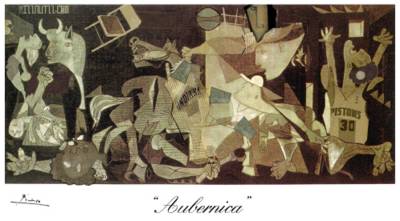http://www.nature.com/news/2004/041122/full/041122-3.html
Automated method seems to spot forgeries as well as a connoisseur does.
In Michael Frayn's novel Headlong, philosopher Martin Clay believes he
has found a priceless painting by Pieter Bruegel the Elder in his
neighbour's farmhouse. The plot follows Clay's desperately clandestine
attempts to authenticate the work. He would have been saved the
trouble by a computerized method developed by US researchers, which
could have evaluated the painting's authenticity without an art expert
setting eyes on it.
The technique, devised by computer scientist Hany Farid and colleagues
at Dartmouth College in Hanover, New Hampshire, identifies the artist
by analysing an individual's characteristic brush or pen strokes. It
is able to distinguish eight drawings by Bruegel, deemed authentic by
art experts, from five acknowledged imitations.
Farid's program suggests that a painting attributed to the Italian
Renaissance artist Pietro Perugino was in fact produced by at least
four different artists (presumably Perugino's apprentices in his
workshop). This analysis is also supported by the judgement of art
historians.
The method, published online in the Proceedings of the National
Academy of Sciences1 promises to reduce the subjectivity of art
assessments made by human experts. Such judgements are currently the
standard way of authenticating works of art, but they are known to be
prone to error. Very recently, a painting long thought to be an
imitation of the Dutch painter Jan Vermeer was found, after close
scientific analysis of the pigments and technique, to be most probably
genuine.
Technology has been deployed in this field before. Some forgeries of
famous artists have been detected by chemical analysis of the pigments
in the painting, which have showed that some of the pigments were not
available at the time the work was allegedly painted. But this
requires that tiny samples be removed from the painting, which art
conservators prefer to avoid.
And such methods are less useful for distinguishing genuine works from
those of an artist's pupils. During the Renaissance in particular,
most famous painters ran workshops in which apprentices learnt to
paint in the style of their master, and often completed parts of his
works. In such cases, attributions rely almost entirely on the
evaluations of experts.
Strokes of genius
The computer technique devised by Farid and colleagues depends on the
fact that, although apprentices, imitators and forgers might be adept
at copying the general appearance and style of a particular artist, no
one wields a paintbrush or a pen in quite the same way as anyone else.
Brush or pen strokes are as individual as a person's handwriting.
The researchers evaluate such features of an image using a
mathematical technique called wavelet analysis. They scan a picture at
high resolution and then use the wavelet technique to decompose the
picture into sets of vertical, horizontal and diagonal lines. "The art
experts are always talking about the painter's lines," explains
Farid's colleague Daniel Rockmore. Their method, he says, "makes maths
out of the metaphor".
From the mathematical distribution of lines, the researchers calculate
a set of numbers that characterizes each picture. These numbers can be
regarded as coordinates in a multi-dimensional space, like a grid
reference. If two images share similarities in their use of line, the
points in space defined by their coordinates will lie close together,
even if the scenes depicted are totally different.
This allows different painters to be distinguished. For a set of 13
genuine and imitation Bruegel landscapes, the points corresponding to
the eight pictures deemed to be authentic all sat together in a
cluster, and the fakes were further away.
The method can be applied to different parts of a single painting too.
That is how Farid and colleagues deduced that three of the six faces
in Perugino's Madonna and child with saints were painted by the same
artist, perhaps Perugino himself, whereas each of the other faces
seemed to be by a different painter. This interpretation was
corroborated by art historians at Dartmouth College's Hood Museum,
where the picture is kept.
Rockmore does not see the computer technique replacing human
judgement. "This would never be the final word for authentication," he
admits. But it could provide the experts with a tool that augments and
tests their evaluations.
--
Regards,
Sanjeev Narang
***
email: ask (at) eConsultant dot com
www.Sanjeev.NET

